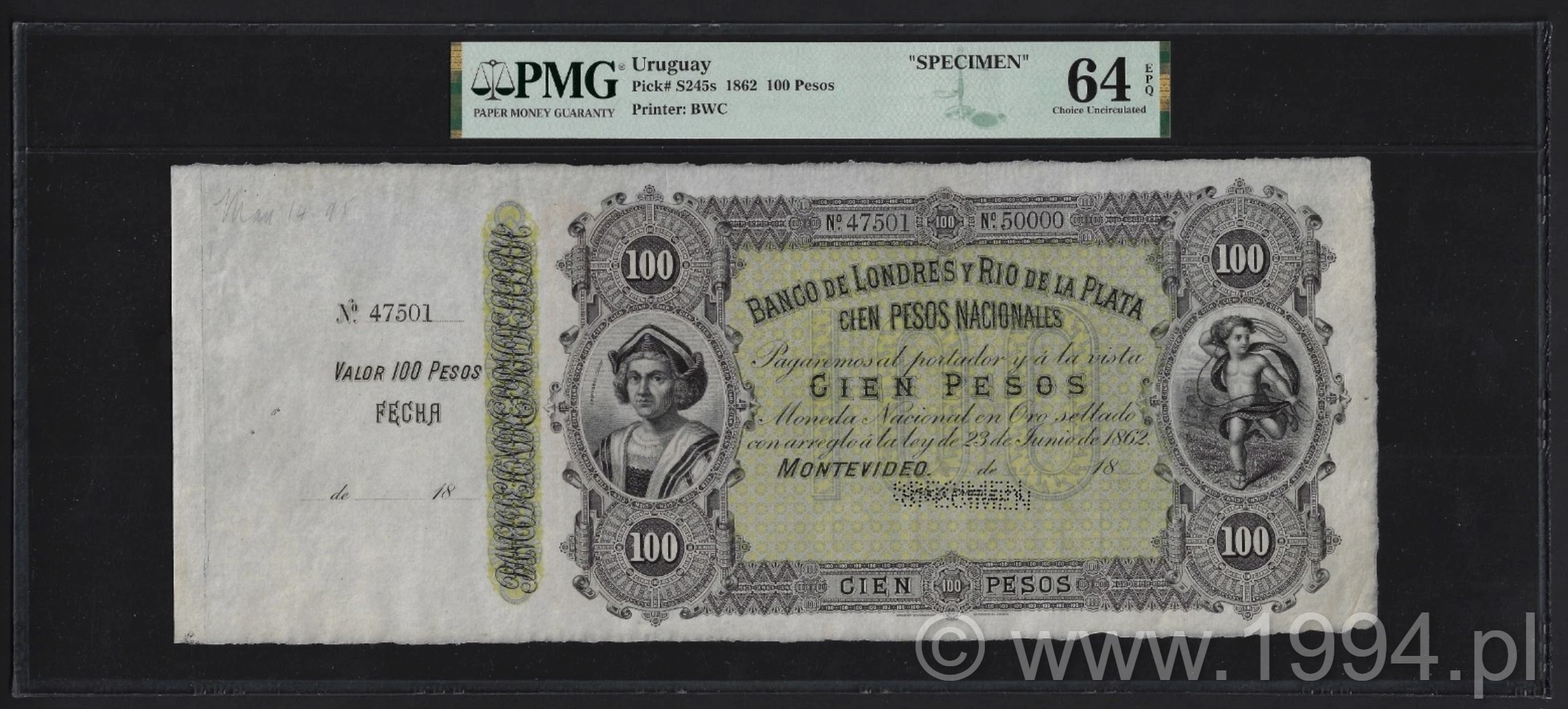Description and research notes
This perforated specimen of the 1862 100 Pesos note was issued for the Banco de Londres y Río de la Plata, one of the earliest private commercial banks to operate in Uruguay and the wider River Plate region. Established in Buenos Aires in 1862 with a Montevideo branch soon after, the Banco de Londres y Río de la Plata became a pivotal institution linking South American trade with British capital, serving as a correspondent for international merchants and handling customs, shipping, and railway finance.
Engraved and printed by Bradbury, Wilkinson & Co. (BWC) in London, this note reflects the firm’s first major commission in the Río de la Plata. The design—Mercury symbolizing trade and Agriculture representing prosperity—carried the authority of the era’s best engravers. Its dense guilloché and fine watermark paper illustrate BWC’s transition from hand-engraved steel plates to mechanical lathe security engraving, a process that defined modern banknote production by the 1870s.
Produced shortly after Uruguay’s 1862 banking law authorized private note issuance, opening the door to foreign capital and British investment. Among the bank’s founders was George Drabble, a central figure in 19th-century Anglo-South American commerce whose companies financed shipping, railways, and the meat-export trade linking Montevideo to Liverpool. For the new bank, this note was both a financial instrument and a declaration of confidence in Uruguay’s future stability.
Each surviving example of this type bears the distinct SPECIMEN perforation across the paper—Bradbury Wilkinson’s standard method for presentation and archival proofs, not an overprint. The perforated format ensures it was a controlled printer’s reference, preserved in the company’s files and never intended for circulation.
Graded PMG 64 EPQ, this specimen ranks among the highest certified and best preserved of Uruguay’s early paper money. Viewed alongside the unissued remainder of the same design, it represents the approved master proof—the polished face of Uruguay’s first truly international banknote, a tangible intersection of British engraving precision and South American ambition.
